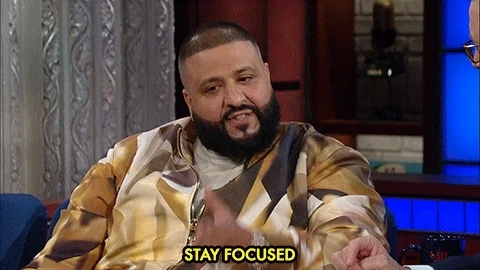Your boss just called to let you know they had to move the deadline for your presentation for the Board of Directors from next week to tomorrow.
And you don't even have all the data you need for it yet!

If this scenario feels stressful to you, that's because it is a high-pressure work situation that could make anyone feel overwhelmed.
But don't worry! These stress management techniques called the "4 R's" will help you manage high-pressure situations at work.
1. Recover
Stressors will come at you repeatedly, often multiple times throughout the day. Think of a few ways to recover during the workday and keep those in your back pocket for stressful work situations.
Things you can do:
 Now
Now
Let go of anything you can't control
 In a few minutes
In a few minutes
Go for a walk
Listen to music or meditate
 Over a lunch break
Over a lunch break
Schedule a therapy appointment during your lunch break
Chat with a friend over lunch
Quiz
What is another example of a strategy you can use in a few minutes to recover from stress at work?
2. Refocus
In high-stress work situations, especially those with close deadlines or immediate needs, after you take a moment to recover, it's time to refocus.
The process of refocusing is a stress management technique where you remove distractions and move your attention to the most important task.

Most stress comes from worrying about the past or the future. One of the things that I love about being a surgeon is that it requires being entirely focused on the present, and on the task at hand. There is no room in surgery for the mind to wander and be stressed by regret or anxiety.
— Dr. Benjamin Domb, award-winning orthopedic surgeon and founder of the American Hip Institute
To refocus:
Remain in the present moment
Identify the most important work task
Center your attention on the immediate task
3. Reframe
After you refocus, you have a better idea of the main issue you must tackle. But it can still seem overwhelming. Try reframing by visualizing and approaching challenges in smaller steps that will lead you to your goal.
In the earlier example, your presentation was moved from next week to tomorrow, and you are stressed because you don't have all the data you need.
You can use the stress management technique of reframing by breaking the task into smaller steps:
Step 1
List out all the data points you need for the presentation.
Step 2
Determine whether you actually have access to some of the missing data but are still waiting for another department to send you theirs.
Step 3
Update your manager, then call the other department and explain the situation. Ask them (very nicely) to expedite the needed data today, since the board presentation was changed to tomorrow.

Step 4
Pat yourself on the back because you just got all the data and are ready to add it to your presentation!
4. Reflect
You made it! After you get through a stressful day, take a well-deserved break. But after you have recovered from the day, take some time to reflect on what went well and what could be done differently if you re-encounter a similar problem or stressor.
 Photo by Anthony Tran on Unsplash
Photo by Anthony Tran on UnsplashExamples of questions to ask yourself when reflecting:
What went well and not so well in this situation, and what can I do differently?
Can I improve my work efficiency in case last-minute work issues arise?
What advice could I give my future self regarding similar situations?
What stress recovery plan or toolbox works best for me during stressful situations?
Let's Try It Out
It's the end of the day, and you just finished entering the data into the presentation you must give to the Board of Directors in the morning.
Then you notice your boss just sent you an email with a few slides they want you to add to your presentation that you need clarification on. Your stress returns tenfold.
Which example below would be the most effective way to reframe this new stressor?

Example A
Step 1
Take a moment to breathe.
Step 2
Reformat the slides so they match your slide theme.
Step 3
It's the end of the day, so try to guess the purpose of the slides your boss sent and assume you know what it's for.
Step 4
Add the new slides throughout the presentation and clock out for the day.

Example B
Step 1
Take a moment to breathe.
Step 2
Walk over to your boss's office and ask if they have a moment to discuss the slides.
Step 3
Ask any questions about the slides and whether the information can simply be added to your pre-existing slides.
Step 4
Add the information from the new slides to your existing slides with related content.
Quiz
Choose the best way to deal with the situation:
Take Action
Now that you've learned the 4 R's to manage stress in high-pressure situations at work, try using these stress management techniques to manage them:

Your feedback matters to us.
This Byte helped me better understand the topic.



